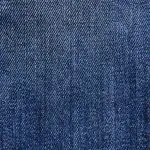Yes, linen can catch fire easily due to its airy structure, allowing flames to spread rapidly. It burns swiftly if untreated with flame retardants. Opting for fire-resistant linen or treatments can reduce fire risks. Be cautious with linen around open flames or heat sources. An understanding of linen's flammability can guide safe handling.
Table of Contents
Key Takeaways
- Linen's open weave structure allows quick ignition and rapid burning.
- Fire-retardant treatments can significantly reduce linen's flammability.
- Flax fibers high cellulose content contributes to linen's quick flammability.
- Opt for fire-retardant versions or treatments to enhance linen's fire safety.
- Linen's breathability enhances airflow, increasing its flammability risk.
Linens Flammability Properties
Exploring linen's flammability properties reveals its susceptibility to rapid burning and the importance of considering fire-retardant treatments when using this breathable fabric in home decor. Linen, woven from flax plant fibers, possesses a lightweight and airy structure that enhances airflow, making it highly flammable. The open weave characteristic of linen fabric allows oxygen to fuel fires, causing it to burn quickly when exposed to flames. Unlike some synthetic materials, linen doesn't melt but instead combusts rapidly, posing a fire risk if untreated with flame retardants.
To enhance safety when incorporating linen into interior design, opting for fire-retardant versions becomes essential. These treatments help reduce the fabric's flammability, offering a protective barrier against potential fire hazards in home settings. When selecting linens for curtains, upholstery, or other decorative elements, choosing fire-retardant options can significantly reduce fire risks, ensuring a safer environment while still enjoying the elegance and breathability that linen brings to home decor.
Flax Fibers and Fire Risks
Flax fibers, the foundation of linen, possess properties that contribute to the fabric's flammability. Understanding the characteristics of these fibers is essential for evaluating linen's fire risks.
Implementing safety precautions and fire-retardant treatments can help mitigate the potential hazards associated with linen's rapid ignition.
Flax Fiber Properties
When examining fire risks associated with linen textiles, it's essential to comprehend the inherent flammability of flax fibers from which linen is derived. Flax fiber properties contribute significantly to linen's flammability, with factors like high cellulose content making it prone to quick ignition and rapid burning. Understanding these key characteristics can help in making informed decisions when it comes to using linen fabrics in various applications. Additionally, due to the natural flammability of linen, considering fire-retardant treatments or seeking alternatives is advisable, especially in settings where fire safety is a concern.
- Flax fiber properties influence linen's flammability.
- High cellulose content in flax fibers contributes to linen's quick ignition.
- Linen fabrics burn rapidly without melting or shrinking away from flames.
- Fire-retardant treatments are recommended for linen textiles.
- Alternatives to linen may be considered for improved fire safety.
Linen Flammability Testing
To assess the flammability of linen textiles accurately, testing the ignition and burning characteristics of flax fibers is essential. Linen fabric, derived from flax fibers, is prone to catching fire quickly and burning intensely due to its breathable nature. The open weave of linen allows air circulation, facilitating rapid flame spread. This poses fire risks in various environments.
Implementing fire-retardant treatments can help mitigate the flammability of linen fabric, enhancing safety measures. Opting for fire-retardant versions or applying suitable treatments is vital, especially when considering linen for interior design. By addressing linen's flammability through testing and fire-retardant solutions, the fire hazards associated with this fabric can be effectively minimized.
Safety Precautions for Linen
Enhancing safety with linen involves considering fire risks and implementing necessary precautions. Linen's flammability risk can be reduced by using fire-retardant treatments or opting for fire-retardant versions of the fabric.
To enhance safety when dealing with linen, the following precautions can be taken:
- Use flame retardant sprays on linen fabrics.
- Avoid exposing linen to open flames or high heat sources.
- Consider choosing fire-retardant versions of linen for interior design.
- Implement proper ventilation in areas where linen is used to reduce fire hazards.
- Educate oneself and others on the potential fire risks associated with linen fabrics.
Air Circulation Impact on Flammability
Linen's susceptibility to rapid combustion is greatly influenced by the increased air circulation facilitated by its lightweight and breathable properties. The weave of linen fabric plays an important role in promoting airflow, which, in turn, enhances its flammability. The open structure of linen allows for ample air circulation within its fibers, providing oxygen flow that accelerates the ignition and burning processes. This unrestricted oxygen supply within linen fabric contributes to the quick propagation of flames, making it more prone to fast-spreading fires.
Understanding the impact of air circulation on linen's flammability is essential for safe handling and use. The breathability that makes linen a popular choice for clothing and household items also increases its fire risk. Being mindful of linen's tendency to combust rapidly under certain conditions can help individuals take necessary precautions to prevent accidents and ensure safety. By recognizing the relationship between air circulation, weave structure, and flammability in linen, one can make informed decisions to mitigate potential fire hazards associated with this versatile fabric.
Comparative Flammability With Cotton
When comparing linen with cotton in relation to flammability, it's crucial to take into account factors like fire resistance, ignition temperatures, and how each fabric reacts to flames.
Cotton, being denser and less breathable than linen, tends to burn at a slower rate and may offer more resistance to fire.
Understanding the differences in how linen and cotton fabrics ignite and spread flames can help us make informed choices when it comes to safety and potential fire risks.
Linen Vs Cotton Flammability
Comparing the flammability of linen and cotton reveals distinct differences in their fire risk levels due to the unique properties of each fabric. When it comes to flammable fabrics, linen and cotton both have their vulnerabilities due to the weave of the fabric and being natural fabrics.
Here are some key points to take into account:
- Linen is highly flammable because of its lightweight and breathable nature.
- Cotton, although denser than linen, is still flammable because of its structure allowing air flow.
- The weave of linen fabric promotes air circulation, leading to fast-burning when ignited.
- Cotton fabric, while less flammable than linen, can still catch fire easily.
- Linen is generally considered more flammable than cotton due to its breathable properties, posing a higher fire risk.
Fire Resistance Comparison
In understanding fire resistance, it becomes evident that linen's flammability, particularly when compared to cotton, highlights significant differences in their burning characteristics. Linen, although less flammable than cotton, still exhibits a higher burning rate due to its lightweight and breathable nature.
The fabric's open weave structure allows for quicker air circulation, contributing to its moderate flammability compared to cotton. Linen ignites easily and burns rapidly, making it important to take into account its fire resistance properties.
When evaluating fire resistance, linen stands as a better option than synthetic fibers like polyester or nylon, but when pitted against cotton, it's clear that cotton has a lower burning rate and may be considered more fire-resistant in comparison.
Fabric Ignition Temperatures
Linen's higher ignition temperature of approximately 255 degrees Celsius sets it apart from cotton regarding flammability. When comparing natural fibers, linen tends to ignite at a higher temperature than cotton. This means that linen fabric is more resistant to catching fire. Fabric composition, weave, and density all contribute to linen's lower flammability risk.
Linen's natural properties, such as breathability and moisture-wicking ability, also play a role in its comparative flammability with cotton. Due to its higher ignition temperature, linen tends to burn more slowly than cotton, making it a preferred choice in situations where fire safety is a concern.
Flammable Nature of Viscose Fabrics
Viscose fabrics, being a type of cellulose-based material, present a high flammability risk due to their chemical composition. The processed cellulose used in creating viscose fabrics, such as Rayon and Lyocell, enhances their flammability, making them highly susceptible to ignition and rapid burning. Due to their natural cellulose fibers, these fabrics pose a significant fire hazard, requiring caution when exposed to heat sources.
To address the flammable nature of viscose fabrics, fire-retardant treatments can be applied. These treatments aim to reduce the fabrics' flammability, making them safer for use. By incorporating fire-retardant options, the risk of ignition and the speed of burning can be minimized, enhancing the overall safety of viscose textiles.
Understanding the flammable characteristics of viscose fabrics underscores the importance of handling and using these materials with care, especially in environments where fire hazards are present. By being aware of their flammability and taking necessary precautions, the risks associated with viscose fabrics can be effectively managed.
Fire-Retardant Options for Linen
Opting for fire-retardant treatments can greatly enhance the safety of linen fabrics, especially considering their inherent flammability due to their lightweight and breathable qualities.
Fire-retardant options for linen include:
- Fire-Resistant Coatings: Applying fire-resistant coatings can create a protective barrier on linen fabrics, reducing their flammability.
- Chemical Treatments: Chemical treatments can be used to make linen fire-resistant, enhancing its safety in case of a fire.
- Inherently Fire-Resistant Linen: Some manufacturers produce linen that's inherently fire-resistant, offering a safer option for various applications.
- Fire-Retardant Sprays: Fire-retardant sprays are convenient for treating linen and other absorbent fabrics to improve their fire resistance.
- Supplier Consultation: Consulting with suppliers who specialize in fire-retardant solutions tailored to linen fabrics can guarantee the highest level of safety in your home or business.
Protective Measures for Linen Products
When considering protective measures for linen products, it's crucial to prioritize fire safety due to the fabric's inherent flammability. Linen's lightweight and breathable characteristics make it highly flammable, with flames spreading quickly due to its woven structure that promotes airflow. To enhance safety, fire-retardant versions of linen or applying fire-retardant sprays can be effective solutions. These treatments can make the fabric flame-resistant, reducing the risk of fire hazards. Consulting suppliers for tailored fire-retardant options specific to linen items is recommended to guarantee maximum protection.
Opting for fire-retardant fabrics used in interior design can also strengthen safety measures, especially in spaces where linen products are prevalent. Chemical treatments can further enhance linen's resistance to flames, providing an added layer of security. By incorporating these protective measures, such as utilizing fire-retardant treatments and fabrics, it's possible to enjoy the aesthetic and functional benefits of linen products while mitigating fire risks effectively.
Frequently Asked Questions
Is Linen Highly Flammable?
Linen is indeed highly flammable. Its lightweight, breathable nature and weave make it prone to fast-spreading flames. Linen, made from flax plant fibers, ignites easily, burns rapidly, and doesn't melt or shrink from flames.
What Fabric Is Fire Resistant?
When it comes to fire resistance, fabrics like wool, modacrylic, and polyester stand out for their ability to resist flames. Understanding fabric properties can guide choices for safer clothing and home decor.
Is Linen Fabric Fire Retardant?
Linen fabric is not inherently fire-retardant. Due to its lightweight and breathable nature, linen can easily catch fire. To enhance safety, fire-retardant versions of linen or treating it with fire-retardant sprays can help mitigate fire hazards.
Is Flax Linen Flammable?
Flax linen, made from flax plant fibers, is highly flammable due to its lightweight and breathable nature. The weave structure encourages fast-spreading flames. Treating linen with flame retardants can help mitigate its flammability hazard.
- Does Chiffon Fabric Stink - July 15, 2025
- Does Chiffon Fabric Affect the Economy - July 15, 2025
- Does Cotton Fabric Have a Nap - July 15, 2025






